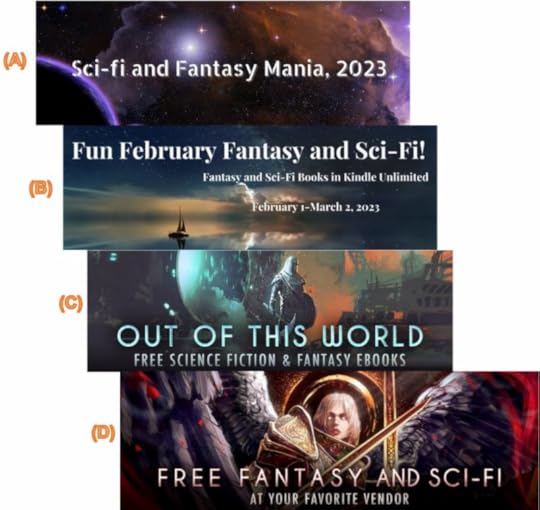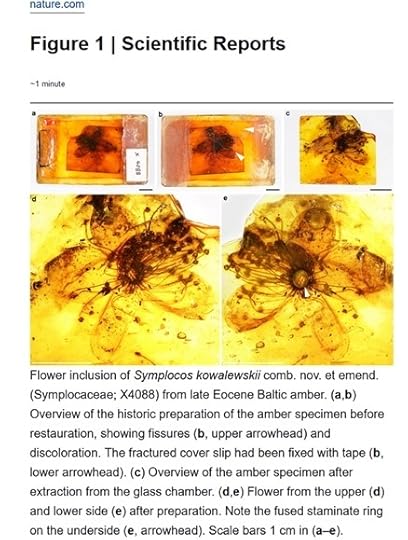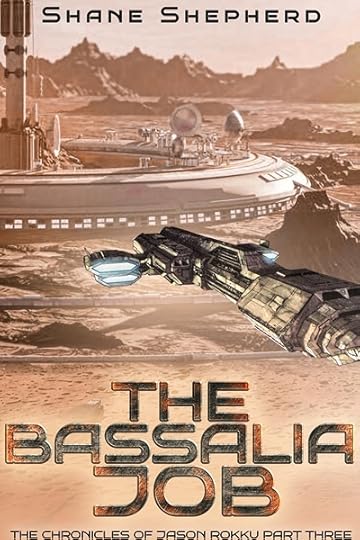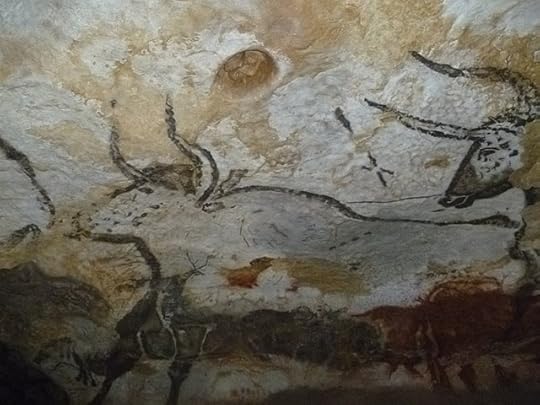Kate Rauner's Blog, page 10
April 12, 2023
Jupiter, here we come! #JUICE #Jupiter #exploration
Jupiter’s moon, Ganymede, is unique. In all the solar system, it’s the only one we’ve found with a magnetic field. On Earth, our magnetic field protects us from cosmic radiation and charged particles emitted by our Sun, which is handy if you’re a living creature. So… what about Ganymede? And it’s water oceans beneath an icy crust? What about other intriguing Jovian moons?
We’ll learn more soon, because the European Space Agency is about to launch the Jupiter Icy Moons Explorer, aka JUICE. “Soon” means, in 8 years the probe will enter orbit around Jupiter. You need patience to study the outer solar system.
The spacecraft will use flybys of Ganymede, Europa, and Callisto as it studies Jupiter and its moons. Then it will enter a highly elliptical orbit around Ganymede… The nominal mission ends after about 3 years, with a possible extension to the mission for 200 days. Either way, the mission will end with an impact on the surface of Ganymede. NASA
With ultraviolet, visible and infrared spectroscopy; radar; laser altimeter, and more scientific instruments onboard, JUICE promises great things. Surprises seem inevitable.
I bet fiction can’t surpass reality, but yo can judge for yourself. Read my short story about a chemist onboard a ship mining Jupiter’s atmosphere: her search for life may get her entire crew killed.
It’s one of eight great scifi and fantasy tales and the eBook is free! Click here now for your choice of on-line stores and formats.
Learn how to follow the launch live on April 13th. Liftoff is scheduled from pad ELA-3 at 9:15 a.m. local time (8:15 a.m. EDT; 1215 GMT), weather permitting. Click here, or view on You Tube:
March 11, 2023
You’re brave! You’re bold! You’re infected! #nature #microbes

There’s a microbe that cycles through the guts of cats and meat of mice. It accomplishes this by causing the mice to become too bold for their own good, so they get eaten. But mice aren’t the only animals affected. Humans are too. Between 9% and 60% of people are infected, varying by location, and the bug does the same thing to us that it does to mice.
It turns any intermediate host into a bold risk-taker. In a 2018 study, scientists found that people infected with T. gondii are more likely to pursue business and entrepreneurship as their career choices… pursuing business and entrepreneurship takes guts and ability to tolerate risks. Starting a company is essentially equivalent to starting a pack. It requires striking out on one’s own with a greater risk of failure, rather than being in the protective folds of someone else’s company. Nautilus
Sometimes taking risks leads to success, and sometimes to failure. Humans don’t get eaten literally as often as mice, but we know the agony of defeat. And the cat bug, Toxoplasma gondii, isn’t the only micro-organism that affects how you live your life. Quite a blow to the human ego.
Thanks to Nautilus and the report from Johnson, S.K., et al. Risky business: Linking Toxoplasma gondii infection and entrepreneurship behaviors across individuals and countries. Proceedings of the Royal Society B 285 (2018).
March 2, 2023
Is your home likely to burn down or wash away? Eek! Find out, then escape for a while with science fiction & fantasy stories #climate #scifibooks
I ran across a tool to evaluate how climate change affects your risk. My brother has a high risk of flooding at his house. Me, only a second Noah’s Flood would wash me away, but wildfires could easily race up my hill.
If, like me, you find this sort of thing fascinating. Check it out at https://riskfactor.com/
Then scroll down to transcend reality with science fiction and fantasy, bundled by Story Origin.

Click below the image on the items that grab you.
[1] Find clean scifi and fantasy. Double treat: Enjoy yourself and help others find a good read by posting stars and reviews. Hurry. Only through March 13. Click here.
[2] Readers give these books a sky full of stars, and if you have Kindle Unlimited, you’ve already paid for them, so click here.
[3] Celebrating Sci-fi and Space Opera – Young Adult and Adult. Click here.
[4] Science fiction and fantasy stories are full of strong females. Join them today. Click here.

Keep scrolling for a special sale in the US and UK, through March 8th.
Thomas sets out on a hike he has done many times before. Taking only what he needs for the three or four hours he expects to be gone, he passes a vehicle in the parking lot. The handwritten note on the dashboard read: Not Abandoned. The view at the end of the trail was not what he expected—neither were the friendships.
Two adventurous people in an unknown world. Only their physical fitness and combined knowledge will get them through everything they may encounter.
Intrigued? Click here now and start reading.

My fire department is training for the upcoming wildfire season. Like in other rural New Mexico counties, we’re volunteers. Since we’ve had a wet winter in my area, I’m hoping for a quiet season.
Whatever the risks you choose to live with, take care and enjoy the coming season.
February 25, 2023
Robots are coming for the job you don’t want #robots #jobs
Skyscrapers are built with steel frames and lots of glass. Cleaning that glass hasn’t changed much since the 1880s when these buildings first rose out of our previously short cities. The job pays well (at least, so they say in New York City.) But it’s hard work. Even worse, it’s tedious work. Many of the current professionals are approaching retirement age, and recruiting replacements is difficult.
So, here come the robots.
Some robots will use the sort of lifts humans do, but some plan to crawl along on suction cups.Small robots for residential windows are already available (and I’ll have to check them out – click here to see one option.) More than one company is about to put commercial robots on the market. They need human overseers at the moment, but I doubt that will last forever. The bots can work day and night, and don’t need time off for anything other than (I assume) regular maintenance or weather holds. They won’t use cleaning chemicals, and maybe won’t even need water.
The cleaning bots will also perform inspections and maintenance, look for cracked glass or air leaks, and use nifty technologies like LIDAR to detect and monitor structural problems.
For a long time, the world has feared technology will leave people unemployed and destitute. Will it finally happen? Hopefully, not the destitute part. So far, horses may be out of work, but people aren’t. The past can’t predict the future, but there’s reason to hope we’ll continue to have jobs… and continue to battle the diseases of affluence that seem to come with our modern lifestyle.
Now, I’m off to check out that residential window cleaning robot, because I wouldn’t mind replacing myself for that task.
February 10, 2023
What’s up with your wisdom teeth? #anthropology #teeth
Do you still have your wisdom teeth? In America, dentists often advise removing them even if they aren’t causing trouble. Other countries aren’t so quick to act. All four of mine were impacted and are long gone. It seems like a poor design. How’d that happen?
 A chimp’s jaws are almost entirely in front of its brain case – very different from us humans.
A chimp’s jaws are almost entirely in front of its brain case – very different from us humans. We develop slowly… And, unlike our primate cousins, our faces are quite flat and squashed. The combination of these factors means that our jaws can’t accommodate that final set of molars until fairly late in life… your jaw needs to be developmentally ready to have teeth all the way at the back of our mouths nearest the joint. If wisdom teeth emerged earlier, the molars could actually damage the jaw they’re growing out of… popsci.com
Or, more specifically:
(i) molars emerge in a predictable position to safeguard the TMJ, (ii) the rate and duration of jaw growth determine the timing of molar emergence, and (iii) the rate and cessation age of jaw growth is related to life history. Thus, orofacial development is constrained by biomechanics throughout ontogeny. science.org
So evolution would gradually eliminate individuals with broken jaws thanks to early-erupting wisdom teeth. But, why did we lose our protruding snout?
Our faces are the ‘oddity’ due to the weird way our skulls grow. Modern humans actually reabsorb bone from the front of their face around the upper jaw, leading to a much flatter skull shape… recent research suggests the jaw evolved and shrank to deal with the fact that cooking was making food softer. dailymail
Blame it on our discovery of cooking, which in turn liberated more nourishment to fuel that big brain. “The evolutionary timeline and adaptive basis of modern humans’ derived life history are among the most enduring mysteries in human origins research.” science.org Well, scientists today must leave something for future research to explain.
February 4, 2023
Eek! Liquid metal robot is real! Honest! Then check out science fiction & fantasy too #ebook #scifibooks #amreading
Those scientists! They’ve done it – built a shapeshifting robot that can switch between solid and liquid states. It navigates obstacles thanks to magnetic particles embedded in its soft metal body. Just like the murderous T-1000 in Terminator 2!
Well, okay… maybe not quite like the T-1000. That’s scifi, and here is more scifi and fantasy to check out. Some are free reads. There are lots of different types of science fiction, so click below the following images and scroll through these Story Origin bundles.
Improve your karma with a Review-a-Thon! Help other readers find great books by posting your star-rating and review.
Guide to awarding stars: On Amazon, 5 and 4 star ratings are positive. Anything less is negative 

(1) Clean Action and Adventure in Science Fiction and Fantasy. Free from Story Origin so you can review the book. Click here for Bundle 1 now.
(2) If U have KU please revU these tU. Read and review science fiction on Amazon’s Kindle Unlimited. Click here for Bundle 2 now.
We aren’t done yet. More Scifi and Fantasy stories to choose from – click below the image and scroll through each bundle before March 2nd.

(A) Scifi and Fantasy Mania! Click here now.
(B) More reads here – all types of science fiction. Be sure to scroll through the bundle. Click here now.
(C) Holiday blues still tugging at your wallet? Free reads that are out of the world. Don’t miss out. Click here now.
(D) Did you miss the March 2nd deadline? All is not lost. Perm-free books are, yes, permanently free. Amazon and other vendors. Click here now.
That’s a lot of books, but I think you’ll be able to finish them before the liquid metal robots come knocking at your door. Enjoy February and Happy Valentine’s Day.
February 3, 2023
Is spring early this year? This beats any groundhog #citizenscience #environmental #groundhog
It takes a lot of data to track how the environment is changing across America – that’s where citizen scientists come in.
The USA-NPN brings together volunteer observers, government agencies, non-profit groups, educators and students of all ages to monitor the impacts of climate change on plants and animals in the United States. usanpn.org
Whether you’re a farmer wondering if early peach blossoms will be clobbered by a spring frost, a bird watcher waiting for the migration of your favorite species, or a fan of wildflowers, you want to know how the life cycle timing of plants and animals is changing. People all over the country are collecting data that let us see beyond our own backyard or today’s weather.
The National Phenology Database has accumulated over 30 million phenology records – that is, observations that track life-events in plants and animals. Now is a great time to start your own participation. Become a volunteer observer: Click Here Now.
Visit the website to learn more, and here’s a brief introduction.
PS: No, this is not phrenology, the pseudoscience about bumps on your head. I read it that way at first too!
January 27, 2023
Ancient flower preserved in amber #fossil #ancient
While this is news, it’s also the art of the natural world – a 40 million year old world.
Amber sometimes contains animals or plant matter that became caught in the resin as it was secreted. Insects, spiders and even their webs, annelids, frogs, crustaceans, bacteria and amoebae, marine microfossils, wood, flowers and fruit, hair, feathers and other small organisms. Wikipedia
Now, a fossil in amber that was discovered 150 years ago has been re-examined and reclassified based on pollen extracted from the plant. The results are available at nature.com, and the fossil is seen here in a screen shot:

It’s the largest such fossil. I’m no botanist, so I may be missing a lot, but I can appreciate the beauty.
January 20, 2023
2023 will be a big year in space… and for scifi readers too #NASA #scifibooks
If you follow space exploration, you’ll be happy to know NASA has a big year planned. Here’s a 3 minute summary, then scroll down for book offers.
Go to the You Tube page for links to these missions and more. Click here.
I’m not sure what I’m most excited about. Maybe the sample return from an asteroid, or the selection of Artemis astronauts who will take us to the Moon. Missions in planning stages forever (or so it seems) are on the tips of our fingers.
Until the real science rolls in, science fiction makes a great choice for your reading pleasure. Here are selections from Story Origin.


Speculative fiction includes scifi, fantasy, horror, and all things futuristic and paranormal. Just as long as the story contains elements that do not exist in reality, recorded history, nature, or the present universe. These genres have always overlapped and make for stories that can be exciting, intriguing, or just plain fun.
 Looking for a short read? Something in Galactic Empires to fit your busy day? Click here.
Looking for a short read? Something in Galactic Empires to fit your busy day? Click here.The Bassalia Job: Key knows there’s only one way to get the Empire off their backs. Landing on the remote planet Bassalia in search of a “fixer” who can grant them new identities, Key does his best to keep an eye on the Cloud. He’s still not sure of its intentions… and the suspicion harboured by his crew is palpable.
Thanks for scrolling all the way down. People sometimes ask me where my ideas come from. Here’s my secret:

Happy New Year. Best of luck in 2023.
January 13, 2023
Calendars may be much older than anyone thought #citizenscientist #caveart #anthropology
This could be an archaeological breakthrough, thanks to a curious furniture conservator in London, U.K.
During the Palaeolithic Age, 15,000 and 40,000 years ago, our hunter-gatherer ancestors in Europe decorated caves with amazing images of animals and people, and some odd markings of dots and dashes. Thousands of people admire the art, and one amateur wondered what those marks meant.
Intrigued by the markings, Ben Bacon launched a meticulous effort to decode them, with a particular focus on lines, dots, and a Y-shaped symbol that show up in hundreds of cave paintings. … Bacon has unveiled what he believes is “the first known writing in the history of Homo sapiens,” in the form of a prehistoric lunar calendar, according to a study published on Thursday in the Cambridge Archeological Journal. vice.com
Bacon speculated the marks might be a calendar of some sort, tracking those animals’ lives. A sort of almanac for hunters rather than farmers. And, okay, he did get some help from “leading archaeologists from Durham University and the University College London to develop the idea and co-author the new study.”
 Can you spot the intriguing dots in this cave painting? Me neither until I looked at the journal article. Click here to see for yourself.
Can you spot the intriguing dots in this cave painting? Me neither until I looked at the journal article. Click here to see for yourself.Suppose (hypothesis) the Y represented the month for calving, and hunters continued counting until winter set in. There were never more than 13 sets of marks, and there are 13 lunar months in a year. Did they count a year the same way their progeny would for thousands of years?
On to testing the hypothesis – could it be falsified? “The team compiled a database of more than 600 line and dot sequences without the Y symbol, as well as some 250 sequences with the Y, which appear mostly in paintings from France and Spain. These sequences span tens of thousands of years, and accompany many different animals.”
These markings aren’t the first thing that jumps out at me. Some look fairly obscure. Click here to check out the images in the journal article at Cambridge.org.
Statistics happened. Of course, that’s necessary and not trivial. Congratulations to the math whizzes. The sequences fit Palaeolithic birthing and mating seasons. The hypothesis is looking good.
Naturally, these findings will be examined and debated… and whether they hold up is TBD. But tens of thousands of years ago, human beings may have been very much like you and me, planning our next meal, and studying the world around us. How neat is that?
Thanks to vice.com for the quotations in this post. Way to go, Ben Bacon, citizen scientist extraordinaire.



